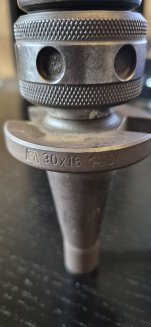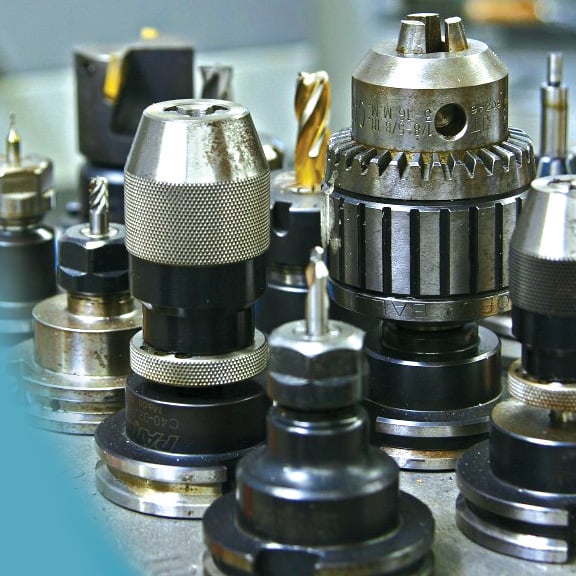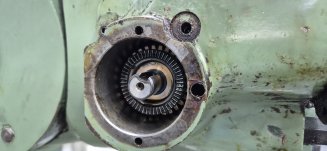1. I'm personally a big fan of not taking apart things that are not broken, just for the purpose of providing an opportunity to break or contaminate them. For the purposes of this discussion, ancient dried out lubricants that are no longer properly functioning do warrant replacement.
2. I'm pretty sure that's greased on mine. I wonder if one of the oil wicks (harder to get to) is going to the wrong place, or happens to intentionally drain through there. Bridgeports are total loss oiling systems, so if it's not dripping it's not being oiled sufficiently.
3. FYI, at least one Bridgeport one of the upper oil cups, I think on the right side of the head SHOULD NOT be removed. The wick has to be bent into place after installation, and the only way to do that is with the head torn halfway down. If you unscrew it, it's not going to go back in correctly unless you tear the head down. You can guess how I found this out. I did confirm with H&W that there is not another solution to properly routing the wick once removed. I got luck in that I have sealed greased spindle bearings, so don't need that particular wick, but I still shouldn't have taken it out.
I completely disagree with you.
I take perfectly working things apart to verify their condition
and sometimes to see how they work (to LEARN).
I don't think we could be friends (LOL).
As to the main oil cup and downward bent wick....
It is not an issue.
You can pre-bend it down, and carefully insert the
oil cup into it's 1/8 pipe threads, and the wick will
end up fine, pointed just as perfect as you bent it.
And furthermore, if you were to leave the wick
pointed straight out, and screwed the oil cup in,
the oil would still reach the spindle bearings
just fine. Bending it down is really not necessary.
So not sure the reason for your concern.
I have had at least 20 Bridgeport heads apart
and I can not see why this perfectly pointed
oil wick could ever be an issue. People who
do not know always use the phrase, "...Because
that is how the factory did it", because either
they are unsure of their own ability to understand
how something works, or they refuse responsibility
for having something work correctly after they
touched it. I have been repairing many different
brands of machinery for years, and I design new
machines also. I have seen some really BAD
factory designs that have made their way into
production. I have worked for many companies
where bad designs are a result of the egos of the
engineering manager to push his design to final
production. I have seen where the accounting
cost cutting has ruined an otherwise good design
and turned it into crap that does not work.
I could cite specific examples, and brand names
for sure. I absolutely claim that many times I
absolutely know more than the factory, because
I have seen what works, and what did not work.
I have an extended degrees and hands on experience
in these areas. But the total hands off approach
that the factory knows best is fooling one's self.
-Doozer






